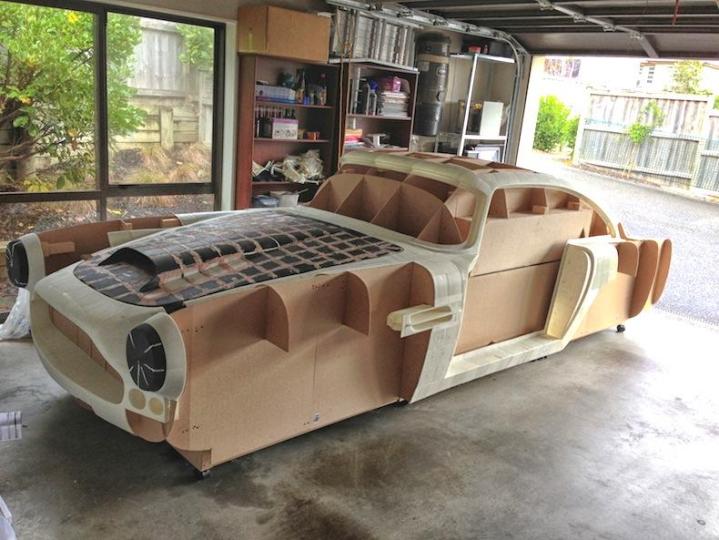
New Zealander Ivan Sentch had long-dreamed of owning a 1961 series II Aston Martin DB4, but with the stylish motor costing at the very least hundreds of thousands of dollars, he knew it was unlikely to ever happen. And then along came 3D printing.
Since December last year, the Auckland resident has been busy building a replica of the classic car bit by bit, and we mean bit by bit. You see, his Solidoodle desktop 3D printer isn’t big enough to print off large objects in one go, so the computer programmer is printing off several thousand sections – just 105mm x 105mm in size – that he then glues into place on a wooden frame. Sentch says that he’s currently about 72 percent of the way toward creating a plug from which he’ll then take a mold using fiberglass.
“I should point out that is just the printing; there will be endless months of work once it’s all assembled before I can take a mold – applying auto filler, sanding, repeat until it’s all true then sanding from 400 to 600 to 1000 grit sand paper until it has a glassy finish then applying mold prep and sanding with 1000 again,” Sentch explained in a Q&A post on Solidoodle’s blog.
The vehicle’s mechanical parts – he’s using a 1993 Nissan Skyline GTS for those – and interior also need to be added.

Remarkably, Sentch says that before embarking on the project, he had no experience of 3D printing, though his knowledge of CAD – he’s using a TurboSquid CAD rendering of the car for his project – is of course proving invaluable in the process.
According to Sentch, the project has been on his mind for the last six years, but starting a family forced him to put it on the back burner until earlier this year.
“The printing itself isn’t very time-consuming – click a few buttons to kick one off before I go to work and another one off before I go to bed – and preparing the next prints only takes a couple of hours a week,” Sentch said. “It’s just really the sanding of the printed parts before I glue them together that is time-consuming – and dreadfully boring.”
As for why the Aston Martin fan went for the DB4 over the pricier DB4 GT Zagato or James Bond’s DB5 model, Sentch explains: “I like old cars but most of the ones I like were just 2-seaters, and now with the kids….I went with an old Aston Martin (2+2 seats) because they’re just very, very cool, and a DB4 because I just like the look of it more.”
You can follow Sentch’s quest to build his dream car by visiting his blog here.
[via Cnet] [Image: Michael Schäfer]
Editors' Recommendations
- Los Angeles-based Czinger is 3D-printing a 1,232-hp hybrid hypercar
- This 3D-printed electric car could be sketchiest Kickstarter yet
- Volkswagen and HP want your next car to have 3D-printed parts


